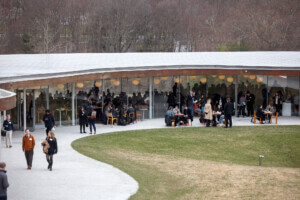Construction remains one of the most carbon-intensive industries, with materials often contributing significantly to the final project’s total pollution (concrete production, for example, is responsible for 8% of global carbon emissions). A report from the Carbon Leadership Forum, a network of academics and industry professionals hosted at the University of Washington to focus on reducing embodied carbon, suggests that as the population grows, the equivalent of one New York City in additional floor space will be built every month around the world. That’s as much as two trillion square feet of new building, or significant renovations, happening over the next 32 years, according to the nonprofit Architecture 2030. While many environmentally concerned architects and builders focus on operational impacts—certainly a significant contributor to climate change—others have emphasized a concomitant need to focus on the embodied carbon, emissions that result from construction and from creating and transporting materials themselves.
A signatory of the Paris Climate Accord, the construction giant Skanska is the latest AEC company to enter the fray of carbon-reduction solutions with an open-source tool called the Embodied Carbon in Construction Calculator (EC3), developed in collaboration with C Change Labs and incubated at with funding from Skanska and Microsoft.
Current tools and assessments center on these lifecycle impact and operational efficiencies of buildings, however, embodied carbon can account for around half of a building’s emissions impact over its average lifespan. “It may not matter how efficiently we operate our buildings over time if we don’t immediately address the carbon embodied in what and how we build,” Skanska USA chief sustainability officer, Beth Heider, FAIA, explained in a release. The hope with EC3 is that those in the AEC industry can better understand their impact in order to reduce it.
“Until now, the building industry has not had a way to assess our supply chain through the lens of their carbon impact,” said Stacy Smedley, regional director of sustainability for Skanska’s building operations based in Seattle, whose benchmarking research was foundational to the project. Currently in a limited pilot, EC3 is an open-source database of over 16,000 materials, searchable by performance requirements, design specifications, project location, and global warming potential—all based on environmental product declaration data. The hope is that stakeholders in the building process, such as designers, developers, and contractors, can better understand the potential carbon impact of their projects. Skanska reports that current participating projects are seeing carbon reductions upwards of 30 percent with little to no difference in cost.
EC3 will be publicly released on November 19.











